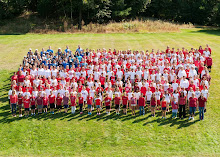Bullying, obviously, is a hot topic these days, and it certainly should be. No child should feel sad, afraid or unable to learn because of bullying behavior by others. Unfortunately, though, I think some of the proposed solutions are too simplistic, and I'm feeling discouraged about current efforts to solve the problem. In my view, bullying is a complex problem, and one that will take all of us working together to solve. Let's begin with models of bullying -- as a society, we provide kids with models of bullying 24/7. As Derrick Jackson noted in his Boston Globe column on February 2nd, 2010, with the trash talk by professional athletes, "we adults have made it almost impossible for adolescents to know when they cross the line." He points out, "We glorify loud athletes, handsomely pay barking talk show hosts and accepted Presidents Bush and Clinton taunting military, political, and media enemies." Talk shows, blogs, and commentary on newspaper websites are rife with personal attacks and put-downs. (I'm feeling discouraged about those conversations, too, these days. Reasonable people can certainly disagree, for example, on whether a new police car is needed, but I'd love to see everyone treat others with respect, avoiding personal attacks and expressing disagreement in a manner that demonstrates respect for the other person and for his/her opinions.) Advertising, both print and media, frequently contains some sort of put-down or meanness played for shock value or for laughs. Then, let's look at television shows and movies, which, again, use disrespect, put-downs, and meanness for shock value and for laughs. Finally, if one reads the news, much of it is reporting who said what about whom, and much of that is "mud-slinging" or blaming someone for something -- again, disrespect and put-downs. All in all, kids are provided daily with a wide variety of models of bullying.
Sunday, February 21, 2010
Subscribe to:
Posts (Atom)





